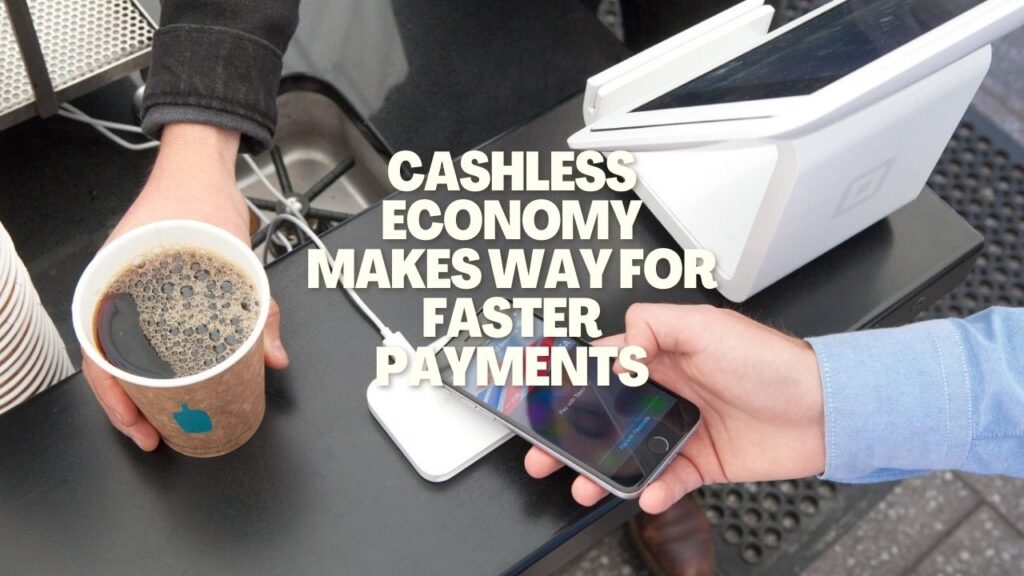The cashless economy in India is a badge we wear with pride. According to a report by the Reserve Bank of India for the year 2022-2023, digital payments in India have been growing really fast. The use of the Unified Payments Interface (UPI) has made digital payments quite popular.
Over the last five years, the use of UPI for retail digital payments increased by 50% every year on average. That’s a big growth! In fact, India’s digital transactions are now even more than countries like the United States, the United Kingdom, and Europe. So, India is doing really well in digital payments compared to those countries.
Let’s discuss the pros and cons of the cashless economy in India.
The Goods of a Cashless Economy

The cashless economy in India has the potential to bring about many positive changes. Firstly, digital transactions are much faster and easier than cash payments. Digital payments also reduce transaction costs significantly, since you don’t need to pay physical money handling fees or exchange rates when making a payment in foreign currency.
Also, the cashless economy makes it easy for merchants to track their sales and customers can easily check their expenses. This can help them manage their finances better and make informed decisions about their money.
Here are some reasons why a cashless economy is a great idea for our country:
- Saves Money and Time on Transactions: Digital transactions are much faster and more cost-efficient than cash payments.
- Enhances Financial Inclusion: A cashless economy can improve access to financial services for those who are marginalized by the traditional banking system.
- Improves Security and Transparency: Digital payments reduce the risk of money laundering and fraud. They also increase transparency in transactions, which is important for effective regulation.
- Increased Tax Revenue: The government can also collect tax revenues more efficiently with a cashless economy as all transactions will be monitored.
- Reduced Black Money: With the elimination of physical cash, it’s harder to hide unaccounted money from the government.
- Saves Cost and Time with Producing, Handling, and Storing Coins and Paper Currency: In the financial year 2021-22, the Reserve Bank of India (RBI) spent a total of ₹4,984.8 crores on printing banknotes securely. If we move to a cashless economy, the cost and time required to produce, handle, and store coins and paper currency can be saved.
- Less Cash, Less Crimes: Research has shown that cashless payments can reduce certain types of crimes, such as tax evasion, counterfeiting, and bribery. Besides, without cash, the incidents of pickpocketing and robbery are also likely to reduce.
- Less Cash Means More Data: A cashless economy can generate more data for analytics, leading to better insights about consumer behavior and improved customer experience. Merchants can use this data to offer more targeted products and services.
- More Spending Helps Improve Economic Growth: Digital payments can encourage people to spend more, which in turn helps increase economic growth. The easy movement of funds from one account to another can also boost economic growth.
- Easier Currency Exchange during International Travels: Without cash, exchanging money while traveling abroad will become much easier. For example, if you are in the US, you can easily transfer money from your Indian account to the US account and withdraw dollars there.
The Bads of a Cashless Economy

As with everything else, a cashless economy also has its drawbacks. Here are some of the challenges it poses:
- Exposes Personal Information to Data Breach Cases: Digital payments come with a risk of a data breach. It is important to ensure that the financial information stored on digital platforms is secure and not exposed to cyber threats. Since all our bank accounts are linked with our Aadhaar card, any data breach can be a threat to our financial security.
- No Alternative Source Available in Cases of Hacking or Technical Glitches: In case of any malfunction in the digital payment infrastructure, or if a customer’s account is hacked, there is no alternative source to provide cash immediately. This can pose a serious threat to those who are dependent on digital payments for their day-to-day transactions.
- Difficult for the Elderly Who Are Not Tech-Friendly: Most senior citizens are not comfortable with the idea of a cashless economy as they are not tech-savvy. This can make it difficult for them to access financial services, pay bills, or receive payments. They become dependent on their children or grandchildren for making payments – leaving them vulnerable to exploitation.
- Rural Communities are Vulnerable Due to Lack of Tech Knowledge: In rural areas, most of the population is dependent on cash transactions. The lack of technical knowledge and awareness about digital payments can leave these people vulnerable to scams or misuse of their funds.
- Areas with Poor Broadband and Mobile Connectivity Face Challenges: Digital payments require strong broadband and mobile networks. If these networks are weak, customers in those areas may not be able to access digital services or make digital payments.
- People with Low Income or Debt Find It Easier to Manage Cash: For people with a lower income or who are in debt, cash payments make it easier to manage their finances. They don’t have to worry about credit card bills or overdraft charges when they pay with cash.
- With No Tangible Assets, Spending May Spiral Out of Control: With digital payments, it’s easy to forget how much money you’re spending. Without the physical reminder of cash in our hands, we can easily go overboard and end up with more debt than we can handle.
The Uglies of a Cashless Economy in India

A recent report by NICE Actimize reveals that payment fraud is becoming a major worry for both financial institutions and consumers. The 2023 NICE Actimize Fraud Insights Report focused on the banking and payments industry to identify the most significant threats and patterns affecting financial institutions.
Findings Based on Extensive Analysis
To compile the report, experts analyzed billions of banking and payments transactions, amounting to over $110 trillion in value. This extensive analysis provided valuable insights into the nature of fraud and its impact.
Sophisticated Fraud Tactics on the Rise
According to NICE Actimize, fraudsters are getting more sophisticated and shifting their strategies. Instead of traditional methods like taking over accounts or unauthorized fraud, they now employ complex authorized payments fraud (scams).
This not only makes the fraud landscape more complicated but also puts financial institutions at risk of double loss scenarios, impacting both the victims and the institutions.
Sharp Increase in Fraud Attempts
The report revealed a significant surge in attempted fraud transactions and amounts between 2021 and 2022. Attempted fraud transactions rose by 92%, and attempted fraud amounts soared by 146%.
This alarming trend highlights two important points: an overall increase in transaction volumes; and the boldness of fraudsters who target larger amounts of money.
Fraud Spans Multiple Channels and Factors
The report emphasizes that fraud is not confined to a single channel but represents a complex, multi-channel threat. It is influenced by factors such as digital transformation, changes in consumer behavior, and evolving fraud patterns.
The report estimated that the absolute amount of attempted authorized payments fraud exceeded the amount of account takeover fraud, experiencing a 45.9% year-over-year increase from 2021 to 2022.
Money Mule-Related Fraud as a Leading Challenge
One of the key challenges facing financial institutions is money mule-related fraud. Money mules play a crucial role in authorized payments fraud, scams, new account fraud, and the movement of illicitly obtained funds. They are individuals who transfer money from one country to another with the help of payment systems or banks.
The report found that 59% of new account fraud is connected to money mules, and the majority of these accounts exhibit mule characteristics within 30 days, indicating that fraud is often initiated almost instantly.
Strengthening Defenses in a Changing Landscape
NICE Actimize CEO Craig Costigan warns that fraudsters are capitalizing on faster payments innovation to carry out sophisticated scams involving money mules who transfer funds away from financial institutions, often making the funds unrecoverable. As the digital landscape evolves, so do the tactics of fraudsters.
Urgent Need to Fortify Defenses
The threats highlighted in the report serve as a stark reminder of the constant risk present in digital channels and payments. Financial institutions must bolster their defenses and review their digital controls to stay ahead of emerging threats and safeguard against fraud.
Conclusion
The cashless economy in India has its advantages and disadvantages. Many people are enjoying the convenience of digital payments, while others are at risk of exploitation or find it difficult to adapt due to a lack of technical knowledge. It is important for financial institutions to stay ahead of emerging threats and strengthen their defenses against fraud in order to protect customers’ funds.


